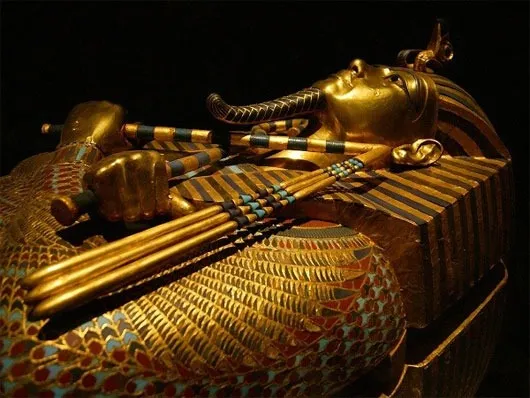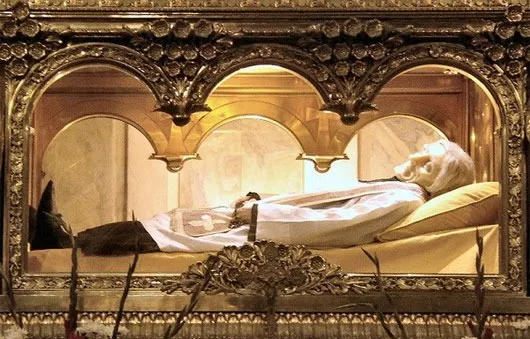Bodies That Endure: The Science Behind Undecayed Remains
Why do some bodies remain intact for centuries, defying natural decomposition? Cases like Saint Bernadette, whose body remained flexible and lifelike decades after death, challenge scientific understanding. Unlike mummies, these “incorruptible bodies” show no signs of preservation methods, yet their skin remains soft and elastic. Strangely, nearby corpses decompose normally, adding to the mystery. Could it be a rare natural phenomenon, an unexplained chemical reaction, or even a miracle? Despite scientific studies, many of these cases remain unsolved, leaving us with more questions than answers.
The Phenomenon of Undecayed Bodies Remaining Intact for Centuries: A Major Mystery for Scientists
Whether you believe in life after death or the existence of the soul, one thing is certain: the human body and other living organisms undergo many changes after death.
It is well-known that when the body can no longer perform basic life functions such as blood circulation and metabolism, it begins to decay. The skin pales and peels off, the eyeballs disintegrate, hair and nails fall out, and eventually, only the bones remain.
Furthermore, this process is accelerated by maggots and bacteria, causing the body to decompose rapidly and return to Mother Earth. However, there are mysterious cases where bodies remain intact for decades, even centuries, despite being buried.
What Is an “Incorruptible Body”?
Most people “return to dust” following the typical decomposition process. However, religious texts have documented cases of bodies resisting decay.
For centuries, the Roman Catholic Church believed that devout and pure believers could have their bodies defy time and natural decomposition in their graves. These are referred to as “incorruptible bodies.”
An “incorruptible body” is one that, regardless of weather conditions, does not decay or decompose. Many believe that only those with exceptional sanctity and virtue can achieve this state.
Though it may sound unbelievable, many churches around the world display these “incorruptible bodies.” While some have begun to decay, others remain surprisingly well-preserved even after centuries. But how does such a phenomenon occur?
Could It Be a Form of Mummification?
From ancient times, humans have developed methods to preserve dead bodies, with Egyptian mummification being the most renowned. In this process, internal organs were removed, and the body was filled with natural herbs to prevent decomposition.
The body was then soaked in oil and finally wrapped in linen. This practice was almost exclusively reserved for royalty. Today, many royal mummies remain well-preserved after thousands of years and can be found in various locations worldwide.
The Mystery of Bodies That Do Not Decompose
Pharaohs and royalty had the privilege of being mummified.
However, one lesser-known fact is that mummies can form entirely by chance. In the 19th century, a unique custom emerged in Mexico: families were required to keep the bodies of deceased loved ones for five years before cremation.
In 1865, the first exhumations in the city of Guanajuato stunned many when all the bodies were intact and showed no signs of decomposition – as though they had been “mummified.”
The cause was determined to be the dry, saline soil of the cemetery, which absorbed moisture and prevented decomposition. Samples of this soil are still displayed in a museum in the city.
Another case of “natural mummification” is the Tollund Man, a prehistoric individual from approximately 2,000 years ago. He was hanged in Denmark, and his body fell into a peat bog where it was nearly perfectly preserved until its discovery in 1950. Remarkably, even his hair and beard remained intact.
Science Steps In
Cases of “incorruptible bodies” like these have been studied by scientists, who often identify the underlying causes. However, some instances remain baffling and defy scientific explanation.
Typically, mummies are found in a “petrified” state, but “incorruptible bodies” are surprisingly soft. Despite being in ordinary conditions with no signs of mummification, their skin retains elasticity even after decades or centuries.
They often appear as if they are merely sleeping or have recently passed away. Strangely, nearby corpses decompose at a normal or even accelerated rate.
One of the Most Famous Cases: Saint Bernadette
One of the most famous “incorruptible” cases is Saint Bernadette, who passed away at the age of 35. She was renowned among Catholics for her visions of the Virgin Mary.
Saint Bernadette passed away in 1879 and was exhumed in 1909. Her body showed no signs of decomposition. She was reburied and exhumed again in 1923.
After the third exhumation, her body was examined, and it was found that even her internal organs remained intact and pliable. Her hands and face appeared lifelike but had been coated in wax. Beneath the wax, her skin had turned brown.
While science has yet to explain why her body was so well-preserved without embalming or environmental factors, researchers believe that decomposition is inevitable and only a matter of time. Saint Bernadette’s remains are currently displayed at the Chapel of Saint Gildard in Nevers, France.










